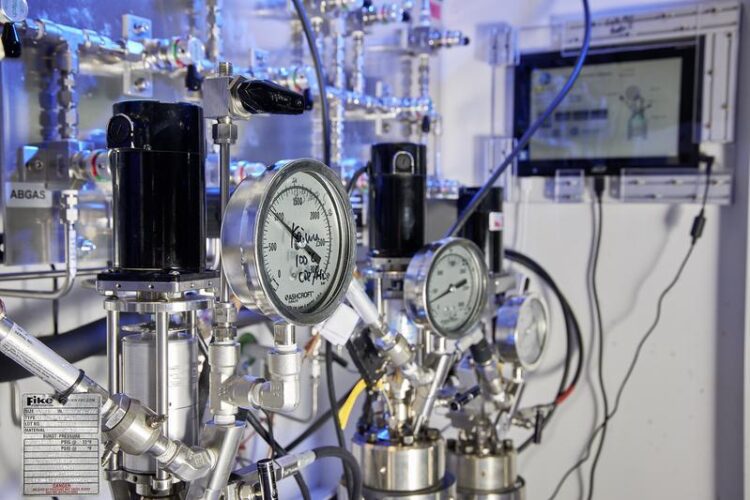Evonik and LIKAT Discover New Variant of Hydroformylation

Pressure reactors at the Leibniz Institute for Catalysis - The reaction is initially carried out on a laboratory scale and is subsequently transferred to a larger scale.
LIKAT/Nordlicht
A team of researchers from Evonik and the Leibniz Institute for Catalysis (LIKAT) has once again achieved a breakthrough in the field of hydroformylation. Hydroformylation is one of the most important reactions in industrial organic chemistry. Unsaturated compounds are converted with synthesis gas to aldehydes and alcohols. It has now been demonstrated for the first time that the catalyst in this reaction is stable even at low pressures. This opens up a cost-effective and environmentally friendly route to aldehydes and alcohols. The research team reports on this in the renowned journal SCIENCE.

Credit: Evonik
Until now, scientists assumed that this reaction, if catalyzed with cobalt, could only be carried out under high pressure conditions without the catalyst decomposing. This has been disproved by Prof. Dr. Robert Franke, head of hydroformylation research at Evonik, together with research partners from LIKAT, Dr. Baoxin Zhang and Dr. Christoph Kubis.
“With this discovery, we have discovered new process options for hydroformylation,” says Franke, who is also a professor of chemistry at Ruhr University in Bochum. “In the future, it may be possible to make this large-scale reaction much more economical and environmentally friendly. Developing these processes is our task for the next few years.”
The researchers succeeded in demonstrating for the first time that cobalt carbonyls, very inexpensive compounds for the catalysis of hydroformylation, are active and stable even at low pressures. The key to this discovery was the development of special spectroscopic measurement methods and associated mathematical tools for data analysis.
High-pressure processes using cobalt carbonyls as catalysts could be replaced in the future by new processes at lower pressures. These new processes would then be more cost-effective, energy-efficient and thus more sustainable than in current practice. At Evonik, this would have implications for the production of long-chain alcohols, such as the oxo alcohol isononanol (INA), which is used in the manufacture of plasticizers, among other things.
Due to the particular importance of this discovery, the renowned journal Science published the results of the project. This is the second publication by Franke and colleagues from LIKAT in Science on carbonylation reactions. In 2020, the team succeeded in the so-called “Dream Reaction”, the direct carbonylation of 1,3-butadiene.
Wissenschaftliche Ansprechpartner:
Prof. Dr. Armin Börner (Head of Department „Hydrogenations & Hydroformylations“)
Mail: Armin.Boerner@catalysis.de
Phone.: 0381 1281-202
Dr. Baoxin Zhang (Researcher „New Hydroformylations Catalysts“)
Mail: Baoxin.Zhang@catalysis.de
Phone.: 0381 1281-418
Originalpublikation:
https://www.science.org/doi/10.1126/science.abm4465
Weitere Informationen:
Media Contact
All latest news from the category: Life Sciences and Chemistry
Articles and reports from the Life Sciences and chemistry area deal with applied and basic research into modern biology, chemistry and human medicine.
Valuable information can be found on a range of life sciences fields including bacteriology, biochemistry, bionics, bioinformatics, biophysics, biotechnology, genetics, geobotany, human biology, marine biology, microbiology, molecular biology, cellular biology, zoology, bioinorganic chemistry, microchemistry and environmental chemistry.
Newest articles

Living in the deep, dark, slow lane
Insights from the first global appraisal of microbiomes in earth’s subsurface environments. Which microbes thrive below us in darkness – in gold mines, in aquifers, in deep boreholes in the…

Common cough syrup ingredient…
…shows promise in treating serious lung disease. EMBL scientists discover that an FDA-approved, over-the-counter cough syrup ingredient has potential to treat fibrotic lung disease. A common over-the-counter ingredient in many…

Layer by Layer
How simulations help manufacturing of modern displays. Modern materials must be recyclable and sustainable. Consumer electronics is no exception, with organic light-emitting diodes (OLEDs) taking over modern televisions and portable…



